
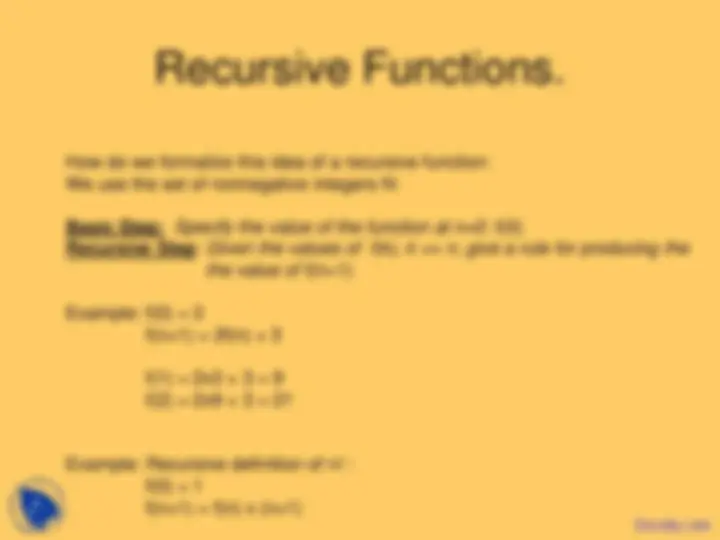
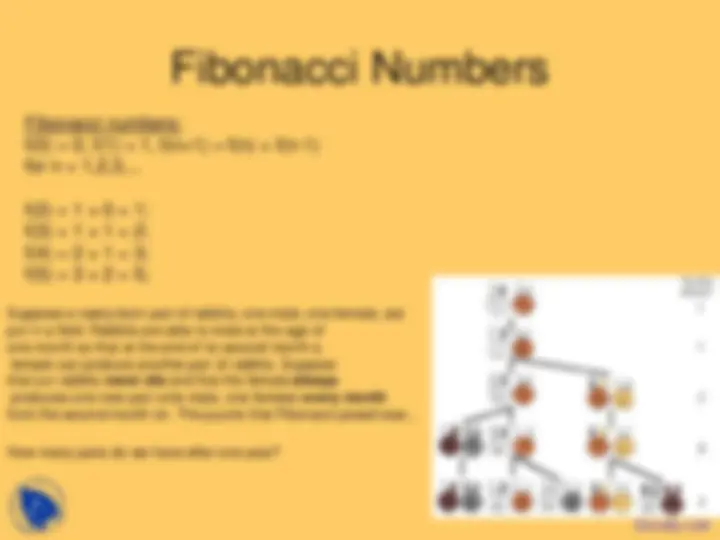
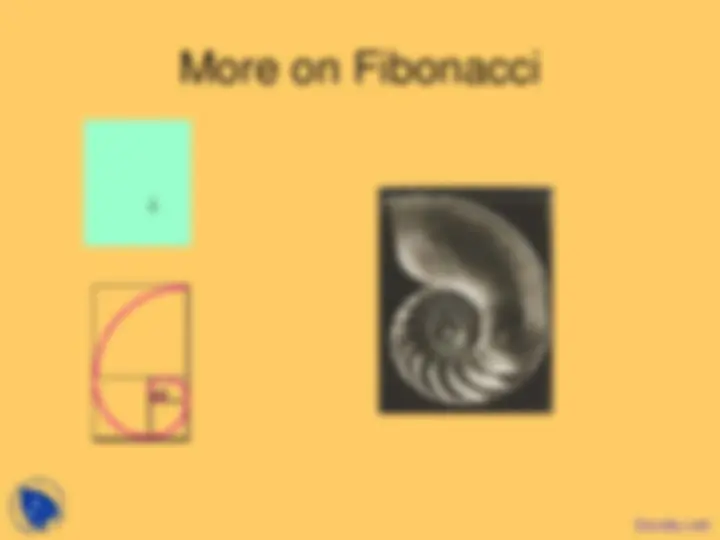
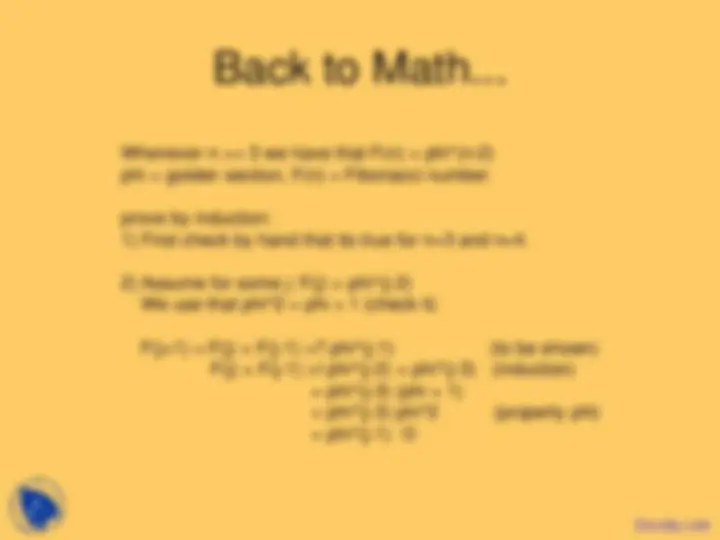
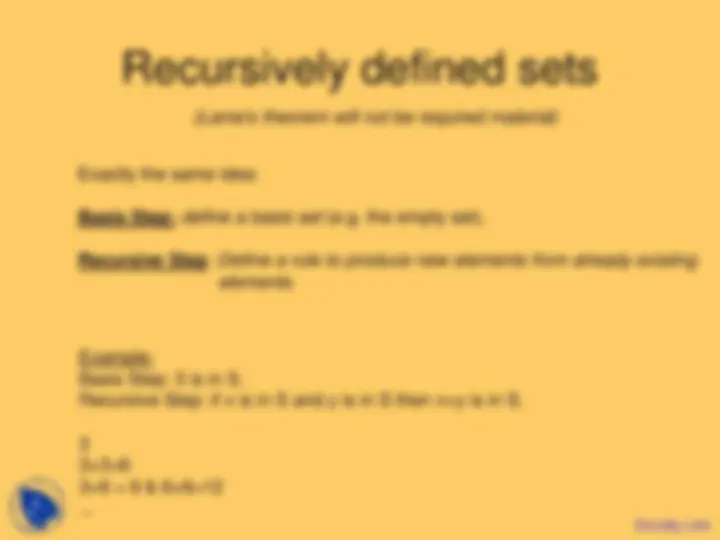
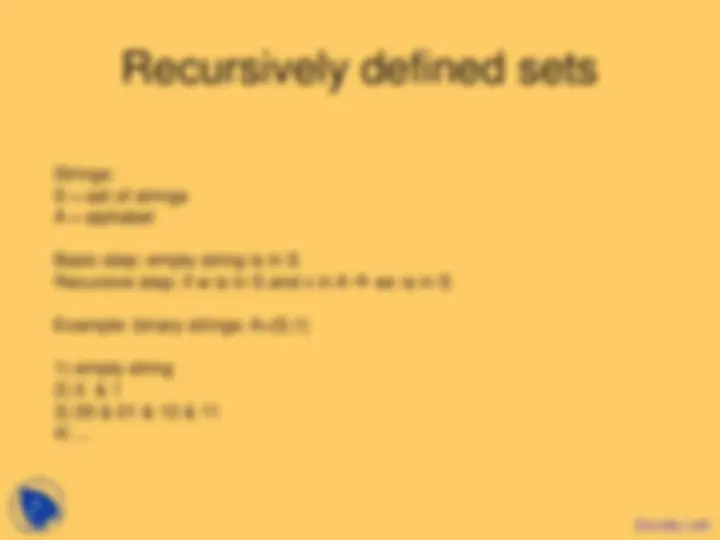
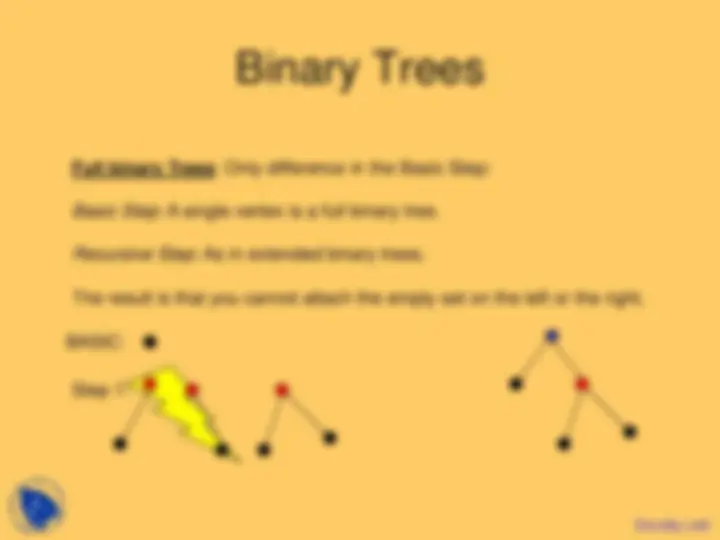


Study with the several resources on Docsity

Earn points by helping other students or get them with a premium plan


Prepare for your exams
Study with the several resources on Docsity

Earn points to download
Earn points by helping other students or get them with a premium plan
Community
Ask the community for help and clear up your study doubts
Discover the best universities in your country according to Docsity users
Free resources
Download our free guides on studying techniques, anxiety management strategies, and thesis advice from Docsity tutors
During the study of discrete mathematics, I found this course very informative and applicable.The main points in these lecture slides are:Recursive Definitions, Fractals, Examples of Images, Recursive Functions, Value of Function, Set of Nonnegative Integers, Rule for Producing, Fibonacci Numbers, Golden Section, Recursively Defined Sets
Typology: Slides
1 / 13

This page cannot be seen from the preview
Don't miss anything!








fractals are examples of images where the same elements is being recursively.
Fibonacci numbers: f(0) = 0, f(1) = 1, f(n+1) = f(n) + f(n-1) for n = 1,2,3,... f(2) = 1 + 0 = 1; f(3) = 1 + 1 = 2; f(4) = 2 + 1 = 3; f(5) = 3 + 2 = 5; Suppose a newly-born pair of rabbits, one male, one female, are put in a field. Rabbits are able to mate at the age of one month so that at the end of its second month a female can produce another pair of rabbits. Suppose that our rabbits never die and that the female always produces one new pair (one male, one female) every month from the second month on. The puzzle that Fibonacci posed was... How many pairs do we have after one year?
x (^) y
Whenever n >= 3 we have that F(n) > phi^(n-2) phi = golden section, F(n) = Fibonacci number. prove by induction:
Strings: S = set of strings A = alphabet Basic step: empty string is in S Recursive step: if w is in S and x in A wx is in S Example: binary strings: A={0,1}
From definition 3 & examples 9,10,11 are not required. Rooted Trees: A rooted tree has vertices, a distinguished vertex called the root and edges which connect the vertices. Basic Step: A single vertex is a rooted tree. Recursive Step: Suppose T1,...,Tn,... are rooted trees with roots r1,....rn,... If we start with a new root r and connect this root to any of the existing roots r1,...rn,... with a new edge, we construct a new rooted tree. basis step: Step 1: ... Step 2: already exists etc. Trees are often very important data-structures for instance to search and sort data.
Full binary Trees : Only difference in the Basic Step: Basic Step : A single vertex is a full binary tree. Recursive Step : As in extended binary trees. The result is that you cannot attach the empty set on the left or the right. BASIC: Step 1: